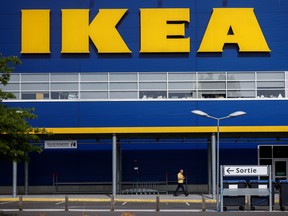Stockholm — The world’s biggest furniture brand IKEA is raising prices by an average of nine per cent as it faces increasing costs in transport and raw materials.
Introduction
IKEA, a global leader in the furniture industry with a presence worldwide, has announced that its prices will increase by an average of 9% across its global markets. This decision follows significant disruptions in supply chains and rising costs related to transport and raw materials.
Background on IKEA’s Challenges
The owner of most of IKEA’s stores globally has indicated that while it is actively exploring solutions such as leasing more ships, purchasing containers, and re-routing goods between warehouses to mitigate supply chain issues, the current situation necessitates passing these increased costs onto customers. The company expects this turbulence to continue into 2022.
Strategic Adjustments
To address supply chain disruptions, IKEA has implemented several measures, including:
- Leasing additional ships to ensure timely delivery of goods.
- Expanding its network of container stores globally.
- Re-routing products through less congested ports to reduce transit times and costs.
Current Price Increases
As a direct result of these increased costs, IKEA has decided to raise prices by an average of 9%. This applies across the board, affecting various product categories such as furniture sets, mattresses, and decor items. The company is currently reviewing its pricing strategy to optimize margins while remaining competitive in the market.
Impact of Inflationary Pressures
In addition to supply chain disruptions, IKEA is also grappling with inflationary pressures stemming from rising costs of raw materials, fuel prices, and increased operational expenses. These factors have contributed to the overall cost increase affecting all segments of the business.
Quotes and Insights
Speaking on behalf of IKEA, Tolga Öncü, the owner of 80% of IKEA’s shares in Sweden, stated: "We understand that our customers are facing higher prices, but we are taking necessary steps to ensure that we can continue delivering high-quality products. We will adjust our pricing strategy based on market conditions and customer feedback." This reflects the company’s commitment to maintaining its position in a competitive market despite challenging external factors.
Broader Market Impact
The price increase is not isolated to the furniture sector but could have broader implications for various industries reliant on high transportation costs. As a result, consumer behavior may shift towards more budget-conscious purchases and alternative products with lower transportation costs.
Future Considerations
Looking ahead, IKEA plans to continue its strategic adjustments in response to ongoing supply chain disruptions and inflationary pressures. The company is exploring innovative solutions, including partnerships with local suppliers and optimizing logistics operations to enhance efficiency.
Conclusion
In the face of significant challenges, IKEA’s price increase reflects a strategic response to maintain profitability amidst elevated costs and supply chain instability. As the market evolves, the company will need to adapt its strategy to remain competitive while ensuring customer satisfaction remains a priority.
